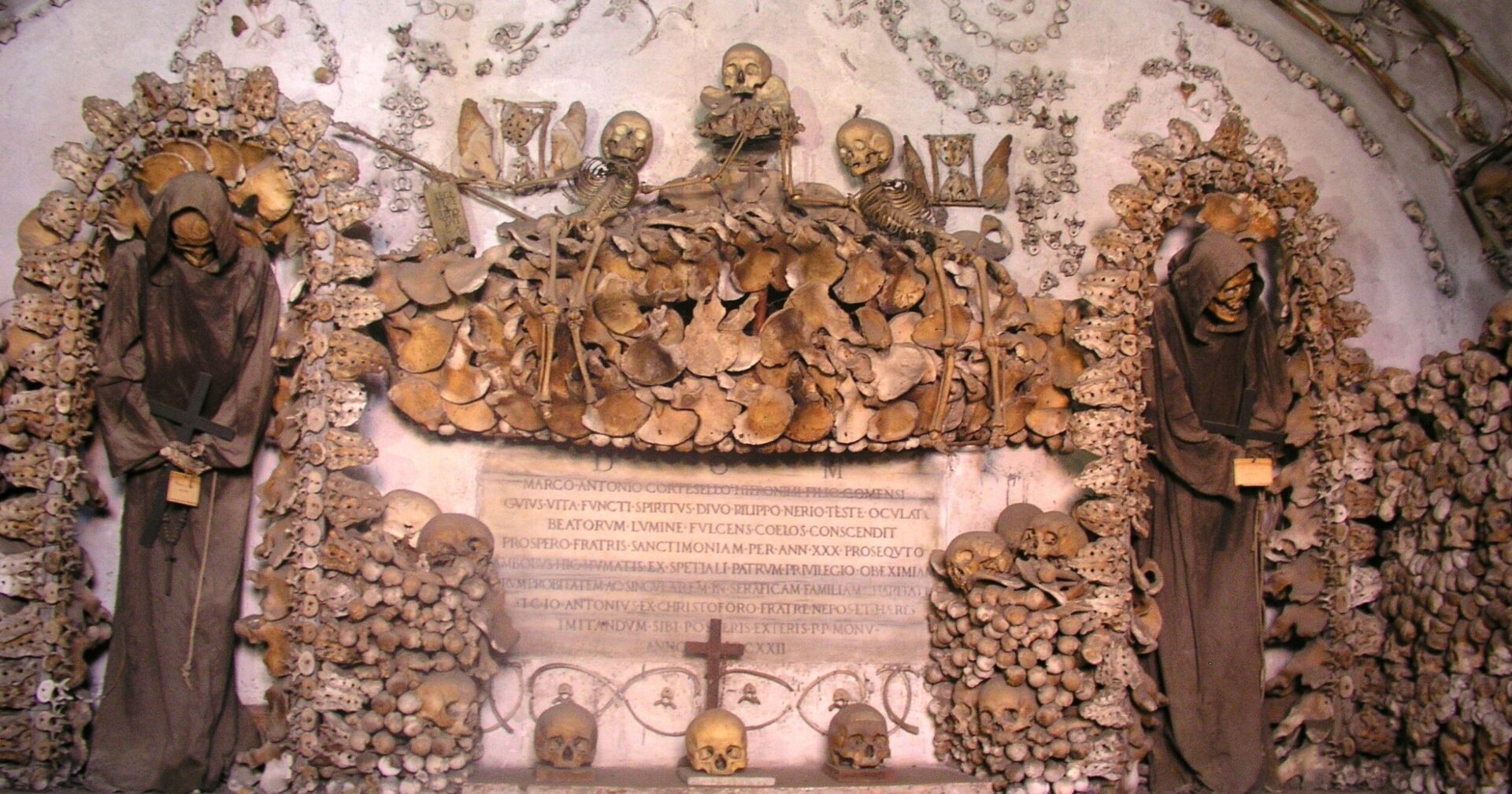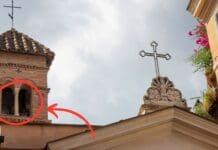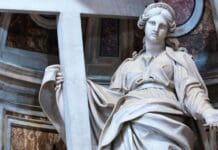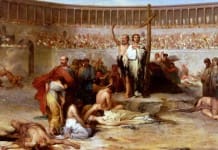In the center of Rome lies the Piazza Barberini, the crossroads for much of the city’s travelers whether by foot, car, or train. What most of these traveler’s don’t know is that beneath the earth of the piazza is the Capuchin Crypt, containing the remains of nearly 4,000 people.
Officially named the Museum and Crypt of the Capuchin Friars, a series of small chapels beneath the 17th century church of Santa Maria della Concezione dei Cappuccini (Our Lady of the Conception of the Capuchins) holds the bones and mummified remains of an estimated 4,000 individuals.
Also known as the “Bone Church of Rome,” the crypts are renowned for the macabre ossuary with thousands of bones used as elaborate decorations for the walls and ceilings: enchanting baroque patterns, chandeliers, all crafted with bones.
The origin of the ossuary is shrouded in mystery. The Capuchin monks arrived in 1631, bringing with them 300 cartloads of deceased friars stored at a convent in the nearby Santa Croce e San Bonaventura alla Pilotta.
One historical document speaks of a Father Michael of Bergamo who oversaw the arrangement of the bones in the new crypt for the Capuchins, but its unclear why he transformed it into an artistic marvel. Another historical document mentions soil in the crypt was brought there from Jerusalem by the order of Pope Urban VIII.
When a friar passed, the longest-buried was exhumed to make room for the newly deceased who was buried without a coffin. The newly reclaimed bones were then added to the decorative motifs throughout the crypts. Remains typically spent around thirty years decomposing in the soil before being exhumed and made into new art.
“The apartments for this purpose are very small, yet harbour hundreds of such tenants. They lie here till they are dried up; when they are brought to light again, in order to yield their former spaces to their successors.”
The ossuary has one odd rule: if a bone falls off the wall or ceiling, it is forbidden to put it back where it was. Instead, the bone must be given a proper Catholic burial.
The crypts contain a total of six rooms:
-
- Crypt of the Resurrection
Featuring a picture of Jesus raising Lazarus from the dead, framed by various parts of the human skeleton. - The Mass Chapel
An area used to celebrate Mass, does not contain bones. In the altar-piece, Jesus and Mary exhort St.s Felix of Cantalice, Francis of Assisi, and Anthony of Padua to free souls from Purgatory. The chapel contains a plaque with the acronym DOM, which stands for Deo optimo maximo meaning To God, the best and greatest. The plaque contains the actual heart of Maria Felice Peretti, the grand-niece of Pope Sixtus V and a supporter of the Capuchin order. The chapel also contains the tomb of the Papal Zouaves who died defending the Papal States at the battle of Porta Pia. - Crypt of the Skulls
- Crypt of the Pelvises
- Crypt of the Leg Bones and Thigh Bones
- Crypt of the Three Skeletons
The center skeleton is enclosed in an oval, the symbol of life coming to birth. In its right hand it holds a scythe, symbol of death which cuts down everyone, like grass in a field, while its left hand holds the scales, symbolizing the good and evil deeds weighed by God when he judges the human soul. A placard in five languages declares “What you are now we used to be; what we are now you will be…”
- Crypt of the Resurrection
The order insists the display is not meant to be macabre, but instead a reminder of our mortality and the swift passage of life, a memento mori on the need to atone for our sins.
In 2012, a new museum was opened to accompany the crypt devoted to the the history of the Capuchins and Church, with thousands of pilgrims visiting each year.
Photo credit: Dnalor 01 via Wikimedia


















A sure reminder of the inevitable end. The question arising therefrom is: where will you like to be when the journey on this Earth comes to an end? A very pertinent question, I must say!